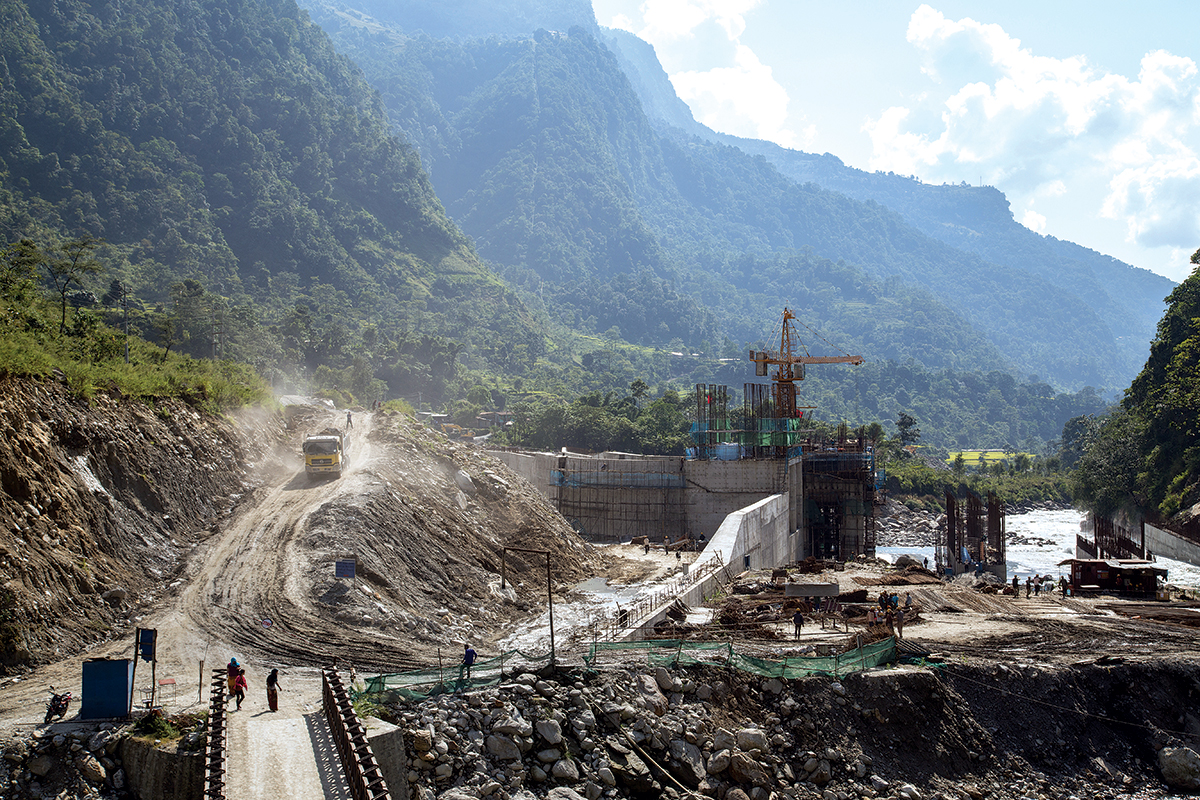
Background and Problem
With the exception of a few hydropower projects, domestic banks in Nepal have been the primary financiers of hydropower projects. Nepal Rastra Bank (NRB) has mandated that at least 10% of the total loans disbursed by commercial banks must be allocated to the energy sector. This includes loans disbursed to hydropower projects, other renewable energy projects, electric public vehicles, and charging stations. According to NRB’s Monetary Policy 2024/25, commercial banks have allocated 7.9% (Rs 350.74 billion) of their total loans to the energy sector.
Hydropower projects in Nepal are typically developed with a debt-to-equity ratio of 70:30 or 75:25, meaning that 70-75% of the total project cost is funded by bank loans. This underscores the importance of banks exercising due diligence and prudence in loan disbursement, especially since these loans are backed by public deposits.
However, there is a common perception that loans to the hydropower sector have been primarily based on personal and corporate guarantees, without sufficient regard for key bankability metrics. One critical metric often overlooked is the risk of termination of Power Purchase Agreement (PPA).
Currently, Nepal Electricity Authority (NEA) is the sole off-taker and distributor of electricity in Nepal. If a PPA between a project developer and NEA is terminated, developers have no established recourse to generate revenue. Direct electricity sales from producers to consumers are constrained by inadequate transmission infrastructure and other logistical issues, while cross-border electricity sales are still in the early stages, with regulatory approvals from India representing a major hurdle. This puts the recovery of loans provided by banks at significant risk.
Current Scenario
NEA has been signing PPAs with two different termination clauses, based on the type of investment: majority foreign investment (Foreign Investment Project) and majority domestic investment (Domestic Investment Project).
Both variations of the PPA outline distinct events of default for each party. For developers, default events include failure to meet the required commercial operation date, not generating electricity during a full dry season, failure to generate electricity for seven consecutive days without notice, and failure to operate in off-grid mode. NEA defaults include events such as liquidation of NEA and material breach of the PPA. Default by either party can lead to PPA termination after following a specified process that includes a cure period and the issuance of a termination notice.
The most pressing issue arises post-PPA termination. In Foreign Investment Projects, the developer may claim compensation for monetary damages directly resulting from NEA’s default. Similarly, the developer is liable to compensate NEA for monetary damages caused by the developer’s default. However, in Domestic Investment Projects, the PPA does not provide for compensation; the PPA only provides the right to terminate the agreement. Following termination, the PPA only guarantees that NEA will allow the wheeling of electricity through its transmission lines for sale to third parties, if technically feasible. In both variations, termination can lead to NEA ceasing electricity purchases from the developer.
In the event of a developer’s default, NEA can terminate the PPA directly. In case of NEA’s default, the developer may claim damages either through the PPA (for Foreign Investment Projects) or under the provisions of the Civil Code 2017 (for Domestic Investment Projects). Section 537 (1) of the Civil Code allows an aggrieved party to claim actual damages caused by a breach of contract. Section 537 (3) specifies that if the contract does not provide for liquidated damages, the aggrieved party may only claim direct and actual damages, excluding indirect or speculative losses. Additionally, Section 266 of the Civil Procedure Code 2017 requires courts to consider factors such as actual losses, lost income and additional damages when determining compensation. The provision also states that only actual or likely losses should be considered, not speculative damages. However, the courts have yet to interpret these provisions concerning PPAs, leaving uncertainty about the quantum of damages that may be deemed ‘direct and actual’.
Thus, the key issues following PPA termination include: (i) uncertainty over the quantum of damages developers may receive, and (ii) the lack of a revenue source for projects, particularly in the case of developer defaults. In such cases, developers are left with assets but no revenue stream, leaving banks to recover debts solely through personal and corporate guarantees.
Conclusion
Nepal’s banks and financial institutions should pursue reforms in the PPA framework for hydropower projects. These reforms should ensure certainty regarding the quantum of damages developers may receive in the event of termination of PPA due to NEA’s default. The compensation should be sufficient to cover outstanding debt, invested equity and the opportunity cost of investors. Additionally, in cases where a PPA is terminated, the NEA or government can mandatorily overtake ownership of the asset at a fair market valuation, especially as there is no use of assets to the developer without a PPA. The current situation of risks on PPA termination also raises a key concern on due diligence and prudence of Nepali banks while disbursing the loans.



-1765787354.jpg)


